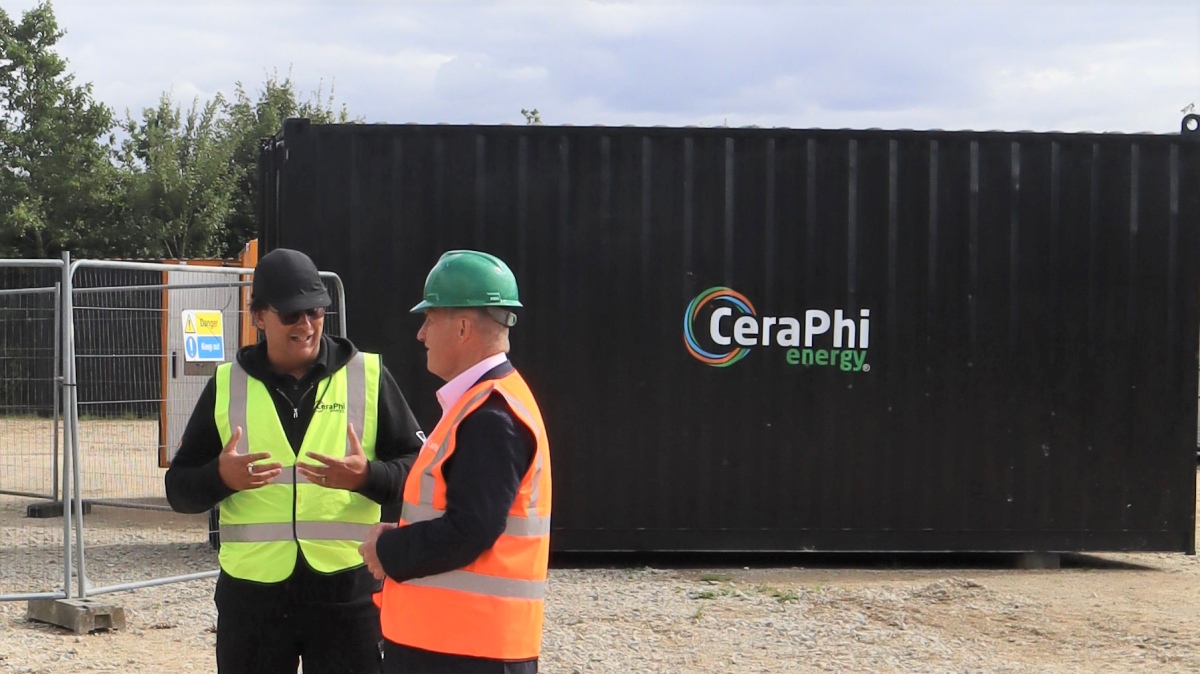A controversial former fracking pad that divided a North Yorkshire community has become a test site for geothermal energy production.

Third Energy’s Kirby Misperton KM8 site in Ryedale is the first of its kind in the UK to move from onshore oil or gas to clean renewable energy.
The site, which saw anti-fracking protests in 2017, was visited today by Thirsk and Malton MP and junior business minister, Kevin Hollinrake.
He described the project as “hugely exciting”:
“It has the potential to provide energy security for our region and ties in with the wider national commitments to tackle climate change.
“Along with the match-funded grant from the government, Third Energy has put its faith in this project which is now paying off. I’m also pleased my constituents have been consulted along the way and look forward to seeing the progress of the site.”
The geothermal test is led by CeraPhi Energy and partly funded by the Net Zero Technology Centre.
CeraPhi chief executive, Karl Farrow, said today:
“As we now refer to the oil and gas industry as the ‘Sunset Business’, we’re standing on the edge of the new generation of clean energy production.
“From stranded assets to a valuable transition towards green energy, our project here at the former Kirby Misperton fracking well site has now begun.
“We have completed the final site set-up, along with full equipment testing and initial pipe installation of almost one kilometre. Our preliminary measurements of the well temperature are 20% higher than predicted, which is great news at this early stage.”
Steve Mason, a director at Third Energy and a former anti-fracking campaigner, said:
“Our mission to transform Third Energy into a renewable energy beacon has taken a massive step with the start of this exciting project. Geothermal energy is the obvious choice to repurpose spent or unviable wells, tapping into what is essentially a very long-term, sustainable heat source.
“Five years ago, Third Energy was at the heart of a very divisive debate when fracking was on the agenda, but our mission to lead the green journey will put North Yorkshire on the renewable energy map, reduce emissions and provide genuine sustainable energy .”
Local people and stakeholders are now being offered the chance to visit the site and learn about geothermal technology.
A public consultation last year found that more than 80% of residents supported plans to reuse the former gas wells to provide geothermal energy.
Other UK onshore energy companies are also looking to using former oil and gas wells to generate geothermal energy. Earlier this week, Star Energy (formerly IGas) announced it had bought into a Croatian geothermal business. It will focus on the Pannonian Basin, an area which saw oil and gas production in the second half of the 20th century.
KM8’s fracking history
The KM8 well received planning permission for fracking in May 2016, despite thousands of objections.
Preparations for a frack began a year later but the government delayed final consent in January 2018 because of concerns about the company’s financial resilience. Fracking equipment was removed from the site later that year and never returned.
The company, later acquired by a renewables firm, changed its focus away from onshore gas extraction to repurposing existing infrastructure for generation and distribution of clean energy. DrillOrDrop extended report

Fracked within in the next 12 months. Fingers crossed .
Interesting that fracking technology is ok for geothermal, but not for hydrocarbon recovery? I have for, a couple of decades, tried to encourage the use of hydrocarbon wells to be a source of geothermal energy & that they be designed such when drilled & completed that post hydrocarbon production they could be repurposed for geothermal. It would be interesting to use captured CO2 as a working fluid in a closed circuit to extract the heat rather than water. Let’s see.